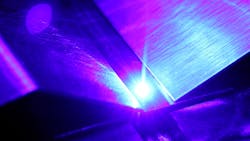Project to develop ship hull laser cleaning process for underwater use
Biofouling on ship hulls is a major problem for the industry because it increases flow resistance, which results in increasing fuel consumption and emissions. Recognizing this, Laser Zentrum Hannover (LZH; Hannover, Germany) plans to develop a laser cleaning process together with Laserline GmbH (Mülheim-Kärlich, Germany) and the Fraunhofer Institute for Manufacturing Technology and Applied Materials Research (Fraunhofer IFAM; Bremen, Germany) to gently and efficiently remove fouling vegetation without damaging the underlying coating.
Other maritime surfaces, such as the foundation structures of offshore wind energy, gas and oil platforms, sheet piling in ports, tidal power plants, or aquaculture network cages, are also affected by biofouling. In the FoulLas research project, the project partners want to use laser radiation to kill and remove the vegetation underwater in a way that is environmentally friendly and safe on the surface. The research partners are developing a process in which the cells are damaged in such a way that, ideally, the water flow washes away the remaining material. And, the paint-based antifouling and corrosion protection systems as well as the material layers themselves should not be damaged.
Tests are carried out in the south harbor on the island of Helgoland, where Fraunhofer IFAM operates a test bench for growth tests. During the multiyear project period, seasonal influences can also be mapped in the real laboratory.
The project, titled “Fouling removal of maritime surfaces using laser radiation underwater – FoulLas,” is funded by the Federal Ministry for Economic Affairs and Energy (BMWi) via the project coordinator Jülich under the grant number 03SX489.
For more information, please visit lzh.de, laserline.com, and ifam.fraunhofer.de.
